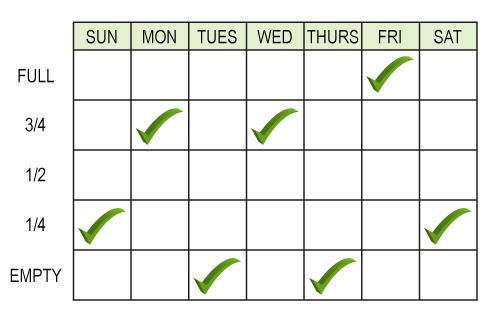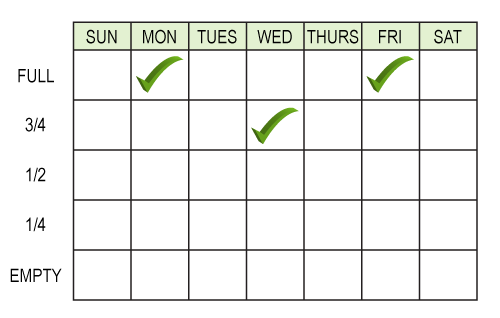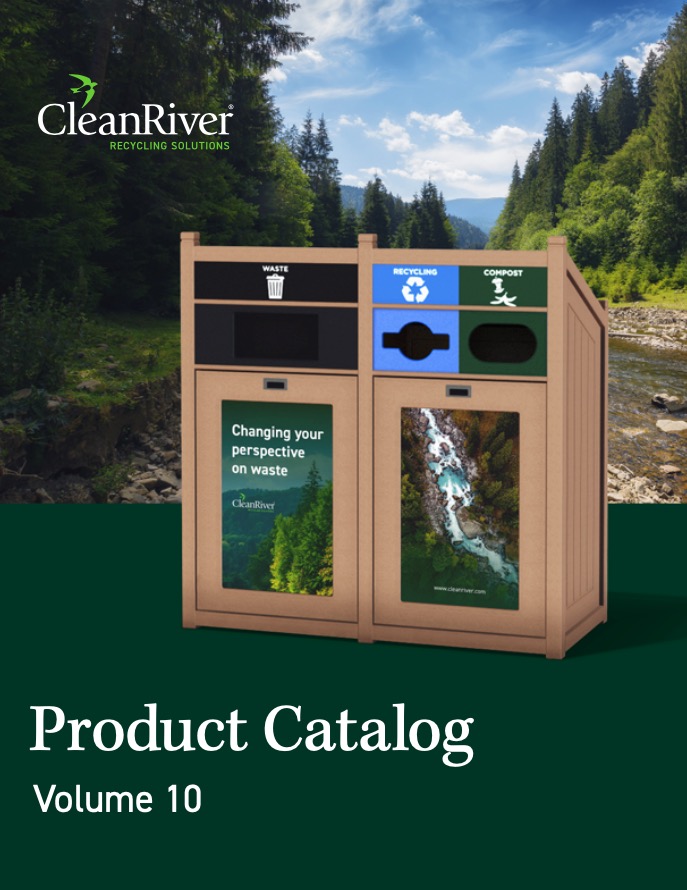Share
Recycling program funding can often be the first hurdle when implementing a program on campus.
How much should you budget?
When determining the type of container to purchase it pays to do your research. When people are pushed for time and have the “Just get it done” mindset, they often choose to invest in off the shelf economical options like blue bins.
Let’s be clear, any receptacle that provides people the opportunity to separate out their recyclable waste from landfill waste is a good thing. However, the challenge that comes with the simple blue bin approach is they lack the vital communication element. Blue bins don’t have graphics to help people make the right choice. With separate containers collecting different streams you end up with a rogue bin situation which negatively impacts your diversion rate. When bins become separated so the students don’t have a choice. They toss their waste into the nearest bin rather than the right bin.
People toss waste into the nearest bin rather than right bin.
Bruce Buchan, CleanRiver CEO says “We’ve had many clients approach us after having implemented a blue bin program who are frustrated with the lack of engagement and lack of results. Not to mention the wasted budget from setting up an ineffective program.”
Conduct a waste audit to identify the volume and type of waste you generate. This enables you to identify how many containers you need and determine their locations. Black & McDonald did a walk-through of their new office during the construction phase and plotted all the recycling containers on the floor plan to help them scope out their budget.
Determine the capacity, the streams and number of containers required. You’ll then be better prepared to contact recycling container manufacturers for quotes. This will help you define your budget.
How am I going to show an ROI on this investment?
A successful recycling program can generate revenue to fund itself. This is achieved through recycling rebates and waste hauler savings.
Recycling rebates.
An effective recycling program diverts recyclable waste from landfill. These recyclables have a market value. Research the value of your recyclables and then talk to your waste hauler, they should provide a rebate on those items based on market value.
If your campus generates a large volume of a particular type of recyclable waste for example cardboard or white office paper, you have the option of selling these items directly to the paper mills or recycling facilities to generate income.
Waste hauler savings.
Because you’re collecting less landfill waste, your bins may not be full when your waste hauler comes to empty them. Talk to your waste hauler about revising your pick-up schedule to meet your actual needs. This will save you money on your waste hauling fees which can be reallocated towards your recycling program.
Before |
After |
In the example above, the organization was having daily pickups whether their containers were full or not. They simply changing their pickup schedule to when their bins were actually full. This way the company saved 43% in hauling fees. Here’s how:
| Before | After | Savings | |
|---|---|---|---|
| Average pick up @ $25 | 7 x $25 = $175/wk = $9,100/ year |
3 x $25 = $75/wk = $3,900 / year |
$3,90 per year 43% saving |
Centralized recycling programs.
Wilfred Laurier University implemented a centralized recycling program and increased their diversion rate to 63%. Centralized recycling programs provide the opportunity to reduce waste hauling and custodial costs. The savings can then be allocated to fund your recycling program.
Hennepin County government office saved $10,000/year when they implemented a centralized recycling program. Their savings were a direct result of reduced waste hauler fees and bin liner purchases.
Here’s an example of a CleanRiver client who made significant cost savings by implementing centralized recycling. The savings were then used to pay back the recycling program investment.
- Client’s head office has 1,000 employees.
- On average, office employees generate 2.2lbs garbage/day and work 250 days/year .
- On average, custodial services cost $23/hour/person and can service approx. 350 work stations per 8hr shift.
| Current Costs | Program Changes | Savings | |
| Tipping Fees (1 ton generated/day @ $100/ton) | $25,000 | $25,000 | $0 |
| 15% Reduction Based on Contract Adjustment and Recycling Rebates | $0.00 | ($3,750) | $3750 |
| Under Desk Plastic Liners @ $0.04 each | $6,2403 per week | $2,0801 per week | $4,160 |
| Central Bin Liners @$0.10 each based on 20 sets of 3 streams | $1,560 | $1,560 | $0 |
| Custodial (8hr shift) | $136,6853Custodial employees emptying deskside trash & recycling and existing central containers | $45,5611Custodial employee to empty 20 central containers | $91,124 |
| Total | $169,485/Year | $70,451/Year | $99,034/Year |
Government and industry grants are an ideal solution for your recycling program funding. They vary by amount and application requirement depending on the region. Many CleanRiver clients have had great success using grants to fund their programs.
What if I don’t have budget available?
Grants range from full recycling program funding, low interest loans and free off-the-shelf recycling containers. In Manitoba Recycle Everywhere provides free recycling containers for schools and public spaces. The Dr Pepper Snapple/Keep America Beautiful Park Recycling Infrastructure Grant program provides free recycling bins to non-profit organizations for athletic fields and public spaces.
Here’s a list of grants that are currently available for recycling containers. The EPA website also has information on recycling equipment grants in the US.
We love helping colleges and universities divert more waste from landfill. If you’d like a quote on any of our recycling solutions please call us at 1-888-646-4246 or email solutions@cleanriver.com.





